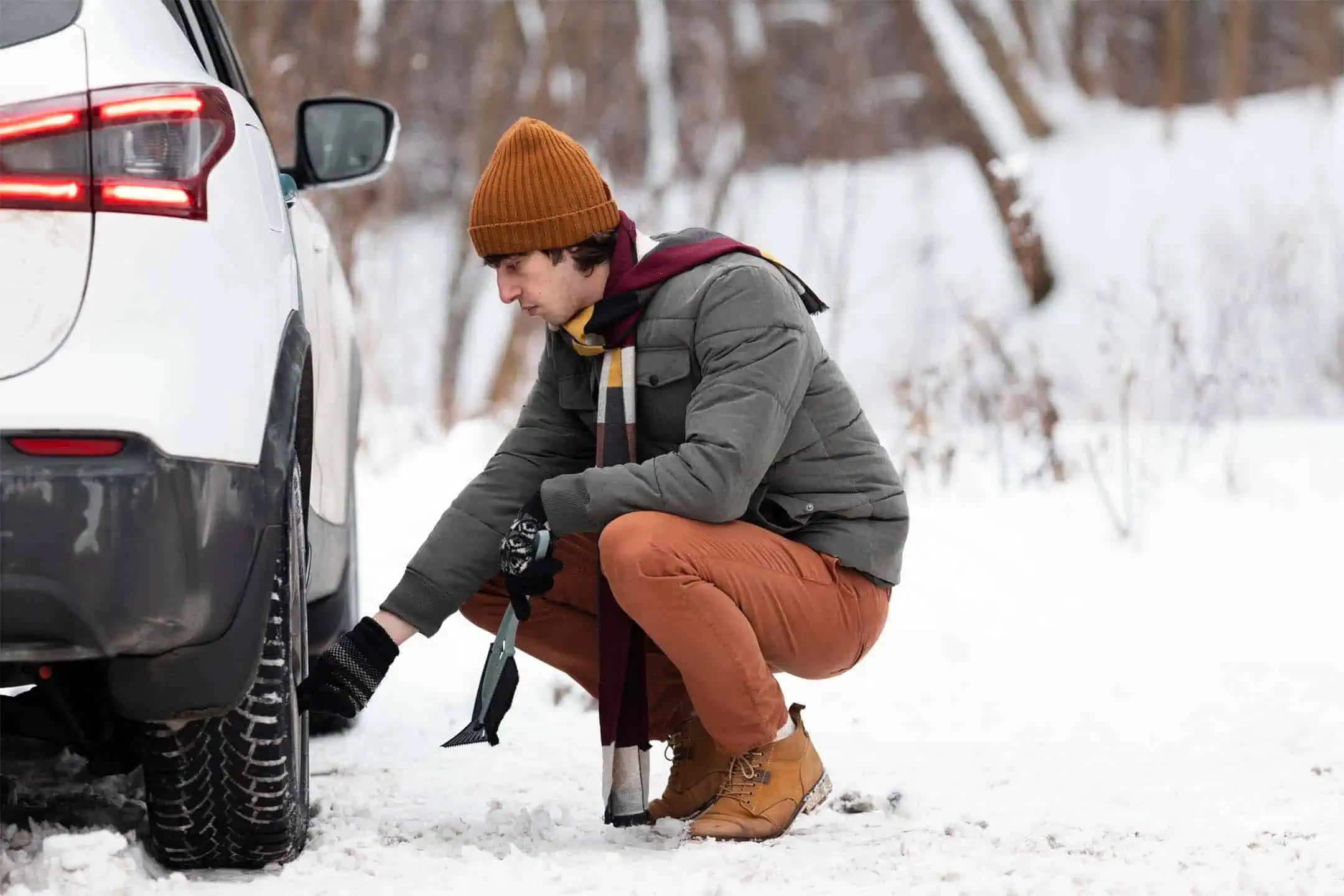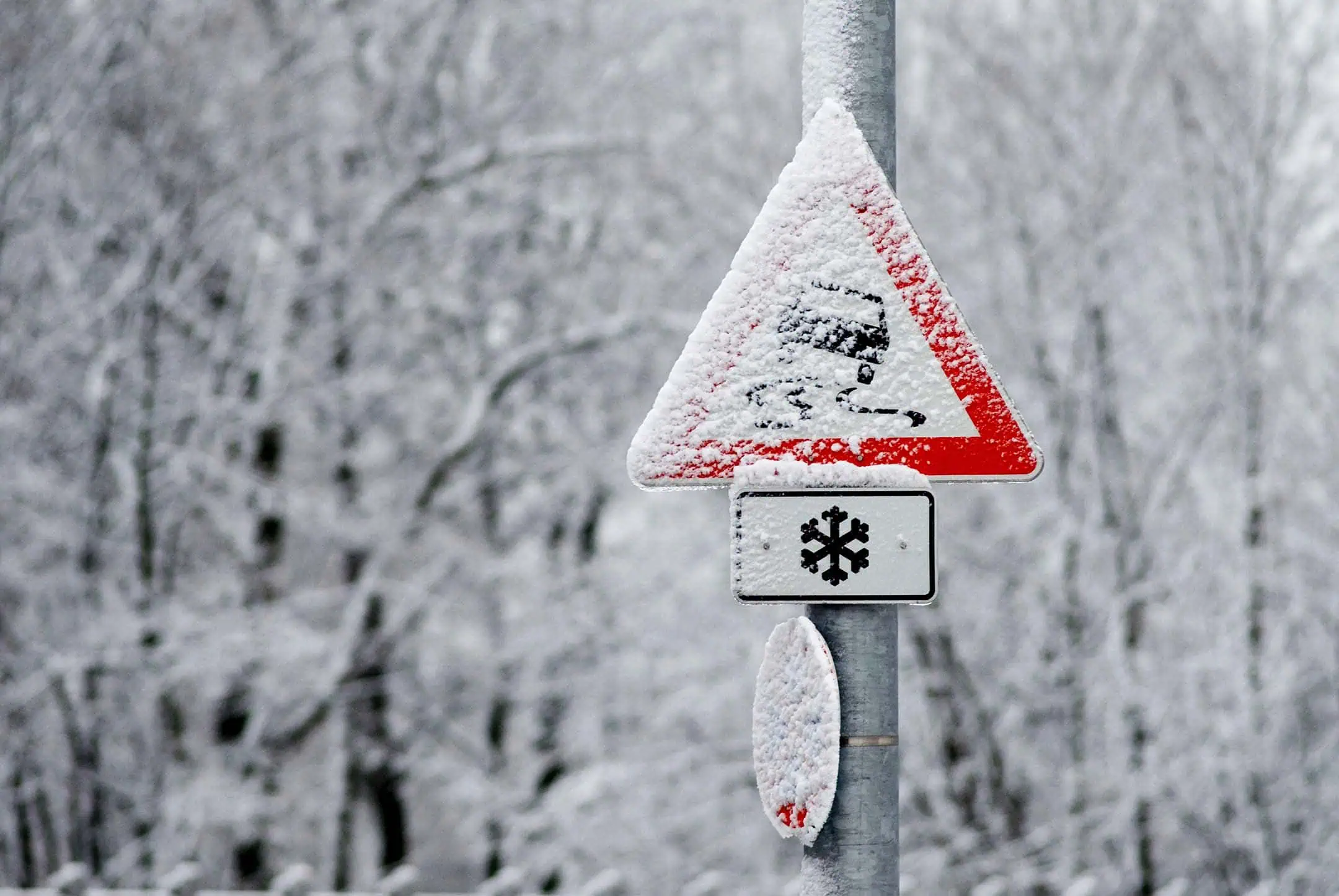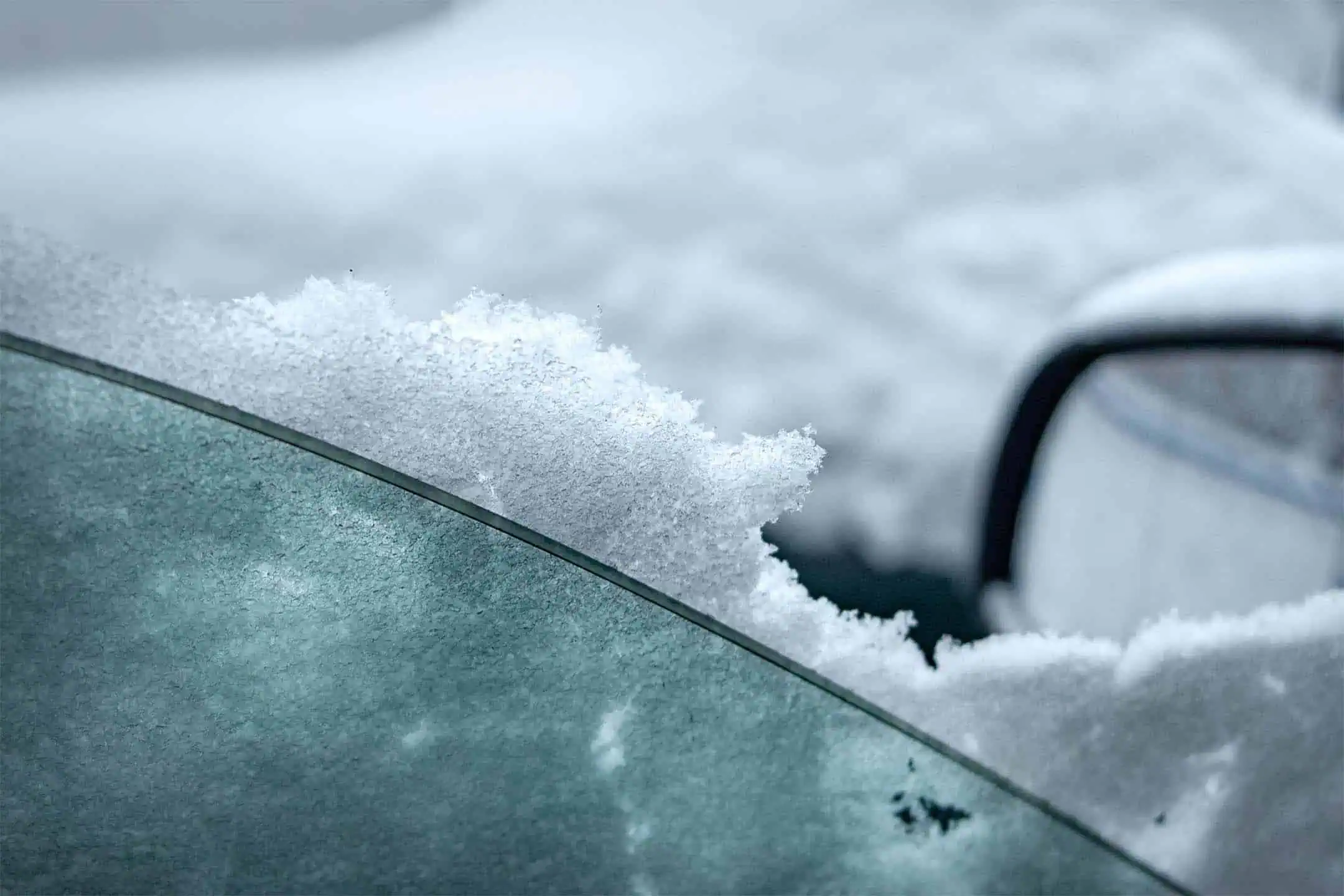Driving in snow
Snowy Conditions

Roads
Vulnerable Users
Driving Law
Breakdowns
Driving Menu
On This Page
Don’t try to drive in severe snow conditions unless you have to.
Without a 4×4 you won’t get far, and you may get stuck.
Are weather conditions to bad to travel?
Before you travel in harsh weather conditions, keep up to date with the latest weather conditions.
- Met Office – for all weather warnings
- Environment Agency – for all flood-related warnings
If you get stuck in the snow
- If you get stuck in snow, do not rev the engine this will only make the rut your wheels are in worse. Instead, move the car slowly backwards and forwards out of the rut using the highest gear you can.
- If this doesn’t work, you may need to ask for a push or get your shovel out.
- Have packed your emergency kit? Including warm clothing, some food (chocolate), water and a mobile phone.
- Stay in or close to your car in heavy snow it is easy to become disorientated.
- Call your breakdown service or the emergency services and let help come to you.
- If trapped in the car stay warm by running the engine, BUT it is vital the exhaust pipe is kept clear of snow. If the engine fumes are unable to escape, you could be overwhelmed by carbon monoxide which is highly toxic. So if there is any risk of fumes coming into the car, do not run the engine. Even if it is safe, the engine should only be kept running for 15 minutes in each hour.

Hey did you know?
Highways England and the governments of Scotland, Wales and Northern Ireland look after motorways and major A roads, and local authorities look after all the other roads, working as hard as they can to keep their networks clear during severe weather.

For safe driving in snow and ice, gentle manoeuvres are the rule
- Reducing speed will minimise the chances of skidding. Your stopping distance can be up to TEN times more in these conditions.
- Drive at a safe stopping speed Travel at a rate at which you can stop safely within the distance you can see to be clear.
- Pulling away in second gear and easing your foot off the clutch gently will help avoid wheelspin.
- Avoid harsh driving Accelerate and brake gently and reduce speed smoothly.
- Slow down in plenty of time before bends and corners.
- When slowing down on snow and ice, you need to avoid locking your wheels. Put the car into a lower gear earlier than usual and as the speed drops use your brakes gently.
- Increase the gap between you and the vehicle in front You may need up to TEN TIMES the standard distance for braking.
- Retain proper ventilation in the car at all times You can quickly become drowsy if the heat is turned up too high.
- Keep good visibility When driving in snow, you may need to make regular stops to keep your windscreen and lights as clear as possible for best clarity.
- In falling, snow visibility will be significantly less, so use dipped headlights or fog lights to make you seen to others (especially pedestrians). As conditions improve turn off fog lights, they should only be on while necessary as they can dazzle other drivers.
Warning!
Look out for winter service vehicles spreading salt or using snow ploughs. They have flashing amber beacons and travel at slower speeds – around 40 mph. Stay well back because salt or spray can be thrown across the road. Do not overtake unless it is safe to do so – there may be uncleared snow on the road ahead.